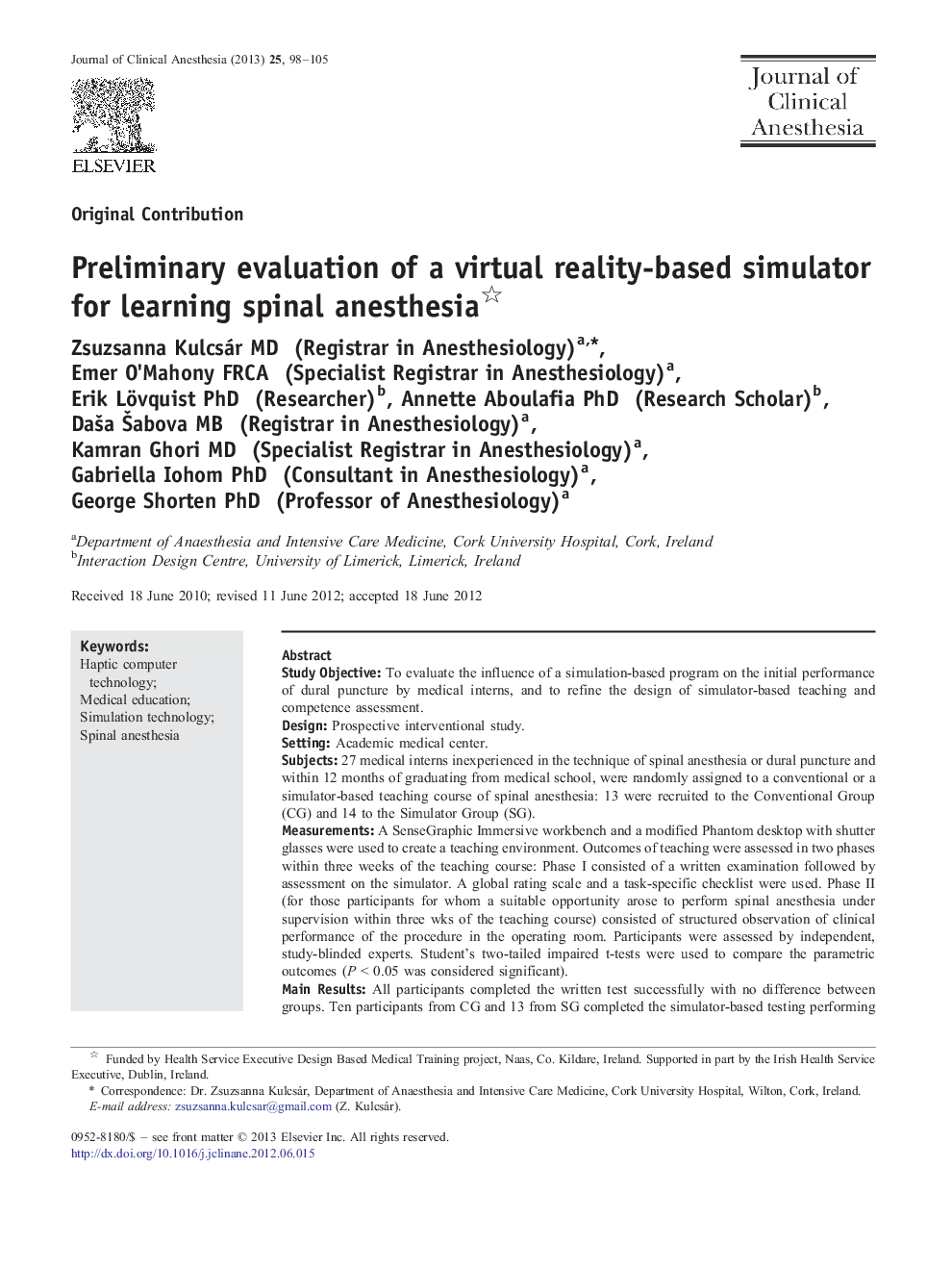| Article ID | Journal | Published Year | Pages | File Type |
|---|---|---|---|---|
| 2763040 | Journal of Clinical Anesthesia | 2013 | 8 Pages |
Study ObjectiveTo evaluate the influence of a simulation-based program on the initial performance of dural puncture by medical interns, and to refine the design of simulator-based teaching and competence assessment.DesignProspective interventional study.SettingAcademic medical center.Subjects27 medical interns inexperienced in the technique of spinal anesthesia or dural puncture and within 12 months of graduating from medical school, were randomly assigned to a conventional or a simulator-based teaching course of spinal anesthesia: 13 were recruited to the Conventional Group (CG) and 14 to the Simulator Group (SG).MeasurementsA SenseGraphic Immersive workbench and a modified Phantom desktop with shutter glasses were used to create a teaching environment. Outcomes of teaching were assessed in two phases within three weeks of the teaching course: Phase I consisted of a written examination followed by assessment on the simulator. A global rating scale and a task-specific checklist were used. Phase II (for those participants for whom a suitable opportunity arose to perform spinal anesthesia under supervision within three wks of the teaching course) consisted of structured observation of clinical performance of the procedure in the operating room. Participants were assessed by independent, study-blinded experts. Student's two-tailed impaired t-tests were used to compare the parametric outcomes (P < 0.05 was considered significant).Main ResultsAll participants completed the written test successfully with no difference between groups. Ten participants from CG and 13 from SG completed the simulator-based testing performing similarly in terms of the global rating scale. Five participants in CG and 6 in SG proceeded to clinical testing. On the global rating scale, interns in SG scored higher than those in CG. They performed similarly according to the task-specific checklist.ConclusionsOverall, no difference was measured between those taught with traditional methods and those, by a simulator based program in regard to the performance of spinal anesthesia.
